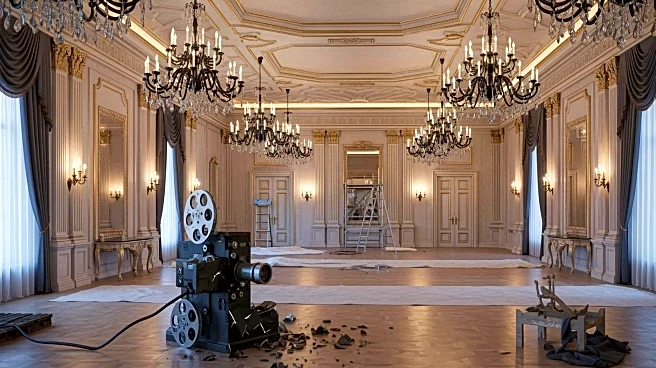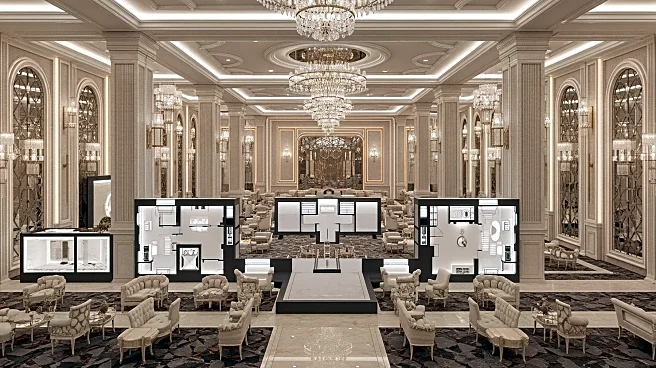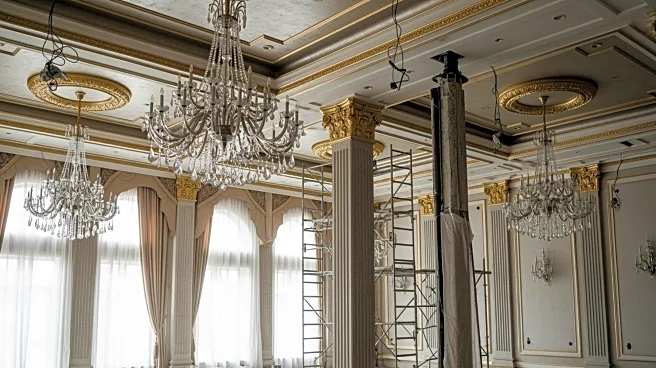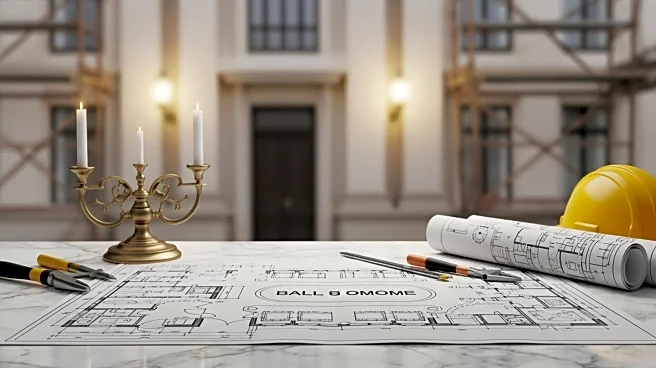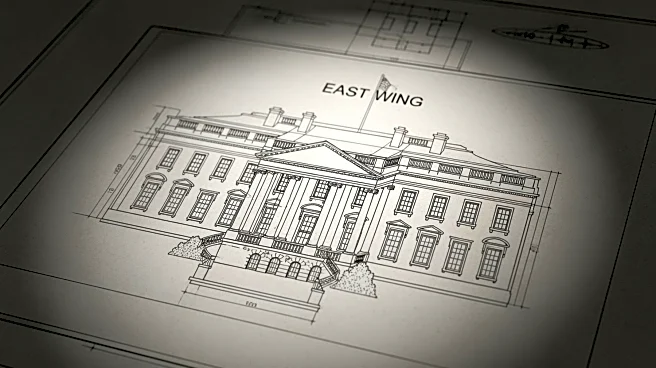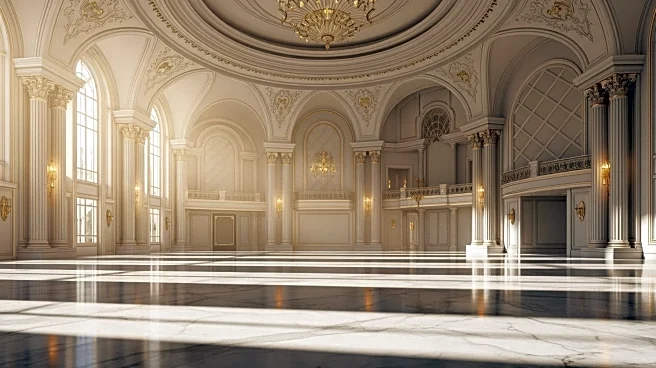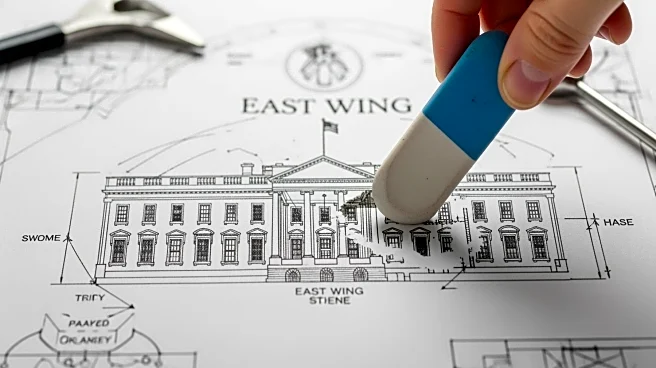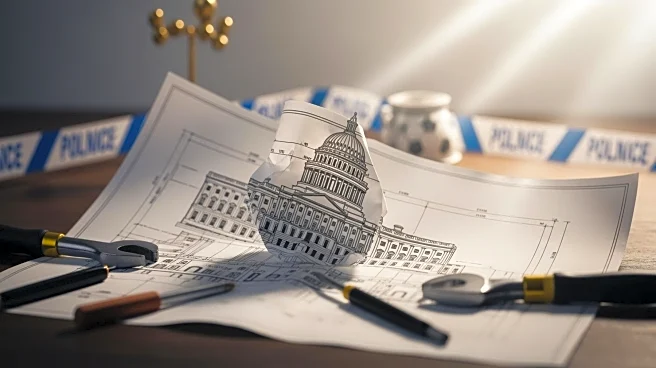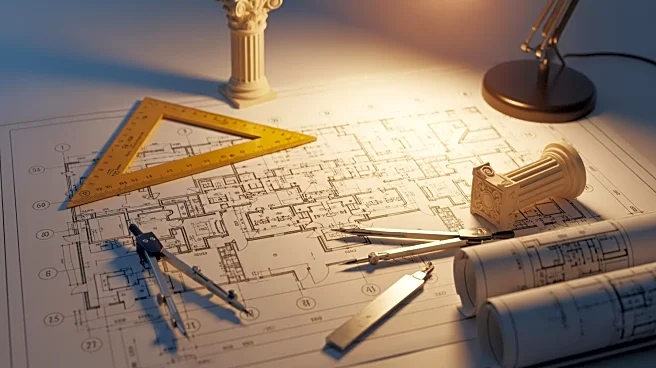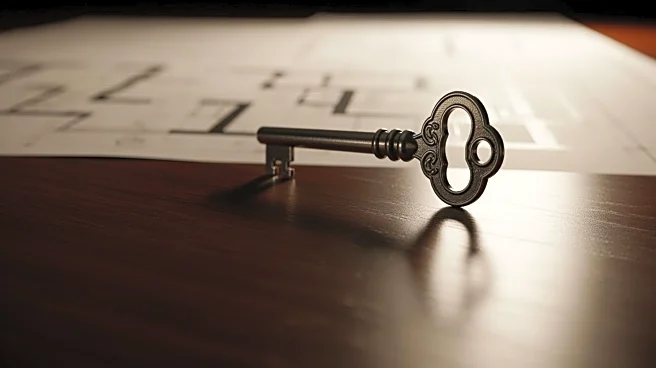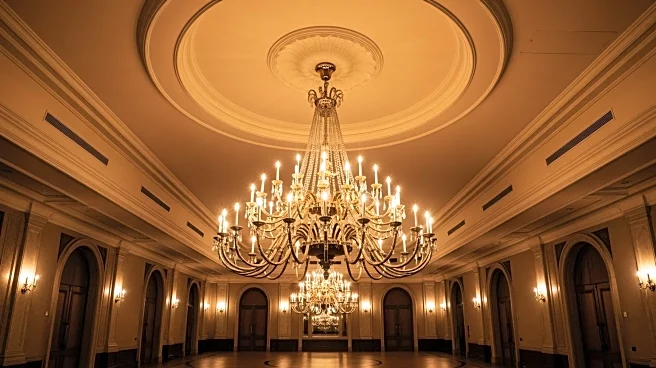What's Happening?
The White House Family Theater, a historic feature of the East Wing, has been demolished to make way for President Trump's planned $300 million ballroom. Originally established in 1942 by converting a cloakroom
into a screening room, the theater has served as a venue for film screenings and sporting events for presidents and their families since Franklin D. Roosevelt's presidency. The theater was known for hosting a variety of films, including family-friendly and more controversial selections, such as the screening of 'Midnight Cowboy' during Jimmy Carter's administration. The theater's demolition is part of a broader renovation of the East Wing, which traditionally housed the office of the First Lady and other significant features.
Why It's Important?
The demolition of the White House Family Theater marks a significant change in the historical landscape of the presidential residence. This move reflects President Trump's priorities in reshaping the White House to suit his vision, potentially impacting how future administrations utilize the space. The theater was not only a place for entertainment but also a cultural symbol, representing the intersection of politics and pop culture. Its removal could alter the way presidential families engage with cultural and social events within the White House, affecting traditions that have been in place for decades.
What's Next?
With the demolition complete, the focus will shift to the construction of President Trump's ballroom, which is expected to be a major addition to the White House. This project may prompt discussions among historians and political analysts about the preservation of historical sites within the presidential residence. Additionally, the renovation could influence future decisions regarding the use and modification of other parts of the White House, potentially setting a precedent for how presidential spaces are adapted to meet the needs of current administrations.
Beyond the Headlines
The removal of the White House Family Theater raises questions about the balance between preserving historical elements and accommodating modern needs within the presidential residence. This development may spark debates about the ethical considerations of altering historically significant spaces and the cultural implications of such changes. As the White House continues to evolve, the impact on its historical integrity and the preservation of its legacy will be closely scrutinized by historians and the public alike.
